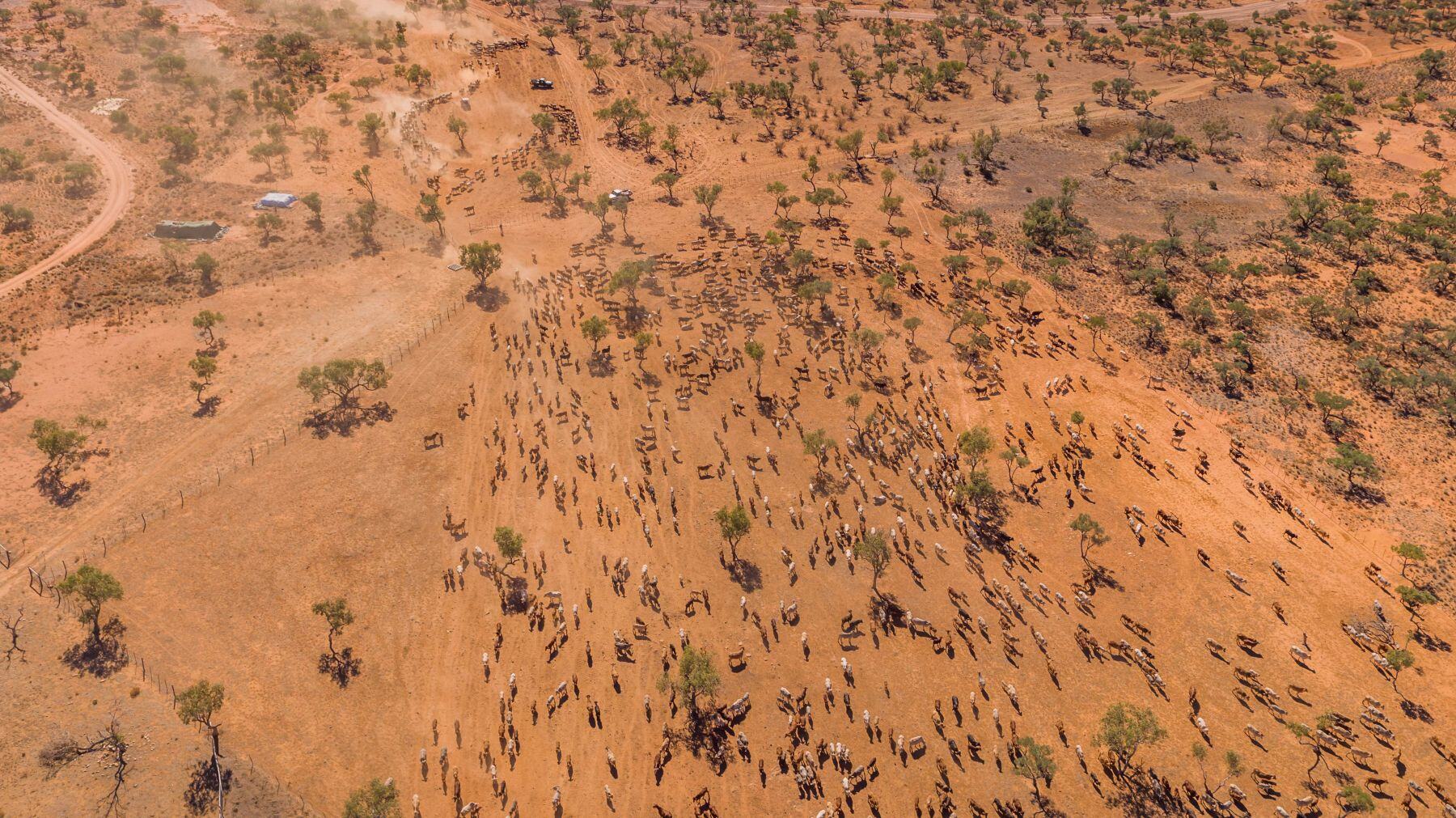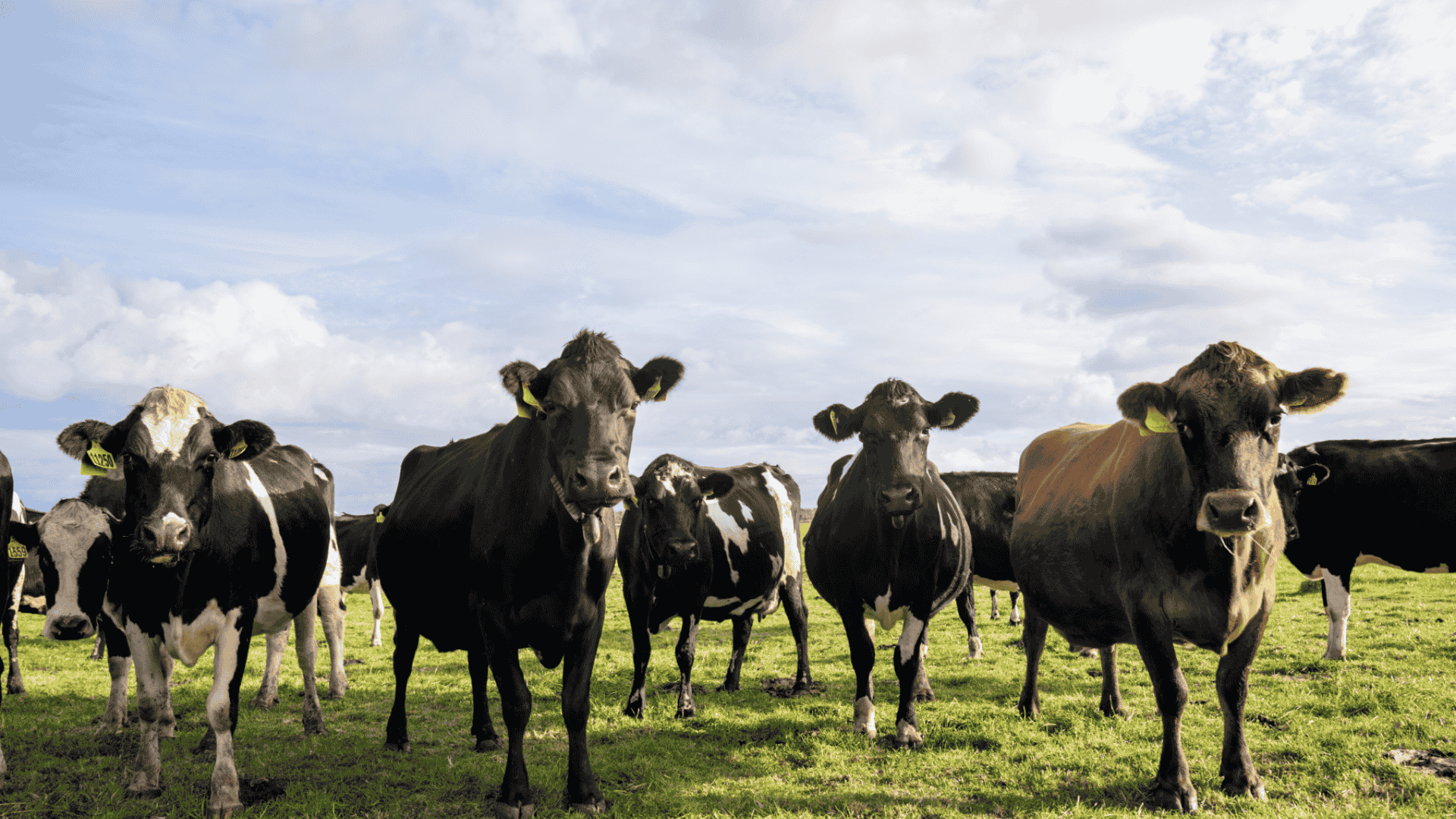APlus News Radio Reports
Stay up to date with the latest livestock trends AuctionsPlus brings you the latest insights from Australia’s livestock markets, direct to the...
5 min read
 Natasha Lobban
:
Apr 4, 2025
Natasha Lobban
:
Apr 4, 2025

It’s been a turbulent week for Australian agriculture, with US President Donald Trump confirming a 10% tariff on Australian exports - including beef and lamb - during an announcement on Thursday.
While widely anticipated, the confirmation has sparked discussion across the red meat supply chain. Attention now turns to what these new tariffs could mean for livestock prices and red meat demand, both domestically and abroad.
We’ve spoken with industry analysts to unpack the potential impacts, and what producers should keep an eye on in the weeks ahead.
READ MORE: The tariff announcement and initial fallout
StoneX Australian Livestock and Commodities Manager Ripley Atkinson said the Australian beef industry would likely accept the announcement and move forward.
"I don't think the market, the livestock price, per se, is going to materially feel an impact, 10% will be manageable. There might be a bit of movement softer, but at the minute, with the current conditions, with the rain, it's actually pointing to every price being higher," Mr Atkinson said.
"Cows at the minute are well over $3/kg in just about every market, so you can tell the domestic price hasn't been factoring in a potential tariff.
"So the 10% itself, you know, there might be a little downside as processors and exporters try and adjust, depending on where the cost has got to sit or be shared in the supply chain but I think that's manageable.
"I think the market will sort of take it in its stride and move on."
Mr Atkinson said the upcoming four short weeks, coupled with positive producer sentiment due to recent northern rains, would have bigger impacts on the market.
"That's what the market is focusing on, it's domestic supply and demand. But once we move through April and getting May, there's pressure on price, because the cattle supply will come."
READ MORE FROM RIPLEY: Season defining widespread rain for key cattle country to drive herd growth in 2025
Elders Business Intelligence Analyst Richard Koch indicated that the tariff announcement had given the Australian export lamb market - which had been suffering from uncertainty in recent weeks - clarity which would allow the normal resumption of trade.
Mr Koch reported that processors had been having difficulties pricing lambs forward with the tariff uncertainty hanging over them.
"We have heard several forward contracts offered around $8.60-$8.80/kg for May but some exporters I spoke to said they couldn’t commit to a price above $8/kg because they didn’t know what price they would be selling premium lamb cuts for into the US," he said.
The proof will always be in the details, in this case, how and by whom the tariff will be paid, but with the tariff now set there is a way forward.
"I think those negotiations would be starting now that they're aware of the amount of the tariff," Mr Koch said.
"10% is probably not a showstopper. There may be some ramifications back through the supply chain, but it's probably a bit too early to really make an assessment on that.
"The good thing is that the the uncertainty is being removed for now and they can get on and negotiate and trade as per normal."
He expected more forward contracts to soon be available, particularly with expected reduced supply in the coming months.
"The US market is very important to the lamb industry because it pays a significant premium for high quality lamb cuts such as boneless legs, racks and short-loin well above other higher volume markets such as the Middle-East and China. Being a discretionary item, its uncertain whether the tariff could be passed onto the US consumer without affecting demand and price back to the exporter," he said.
Lamb is considered more exposed to the impact of the US tariffs than beef, largely due to its position in the premium end of the market where demand is more price-sensitive. Unlike beef, which is primarily sold into the manufacturing sector, lamb relies more heavily on consumers willing to pay a premium—making it more vulnerable to even small price increases.
Meanwhile, Meat & Livestock Australia Managing Director, Michael Crowley strongly emphasised there is no ban on US beef exports to Australia. Nor is there a ban on Australian red meat exported to the US.
US President Donald Trump referred to Australia's "ban" on US beef entering Australia in his tariff speech on Thursday morning Australian time, a claim refuted by Mr Crowley.
He explained that Australia had completed science-based biosecurity and food safety assessments that would allow the trade of US beef from cattle born and raised in the US.
However, the US has also asked for access to Australia for beef from cattle raised in Mexico or Canada and processed and exported from the US. This revised request is undergoing the normal Australian science-based assessment to protect our biosecurity.
“Despite the imposition today of 10 per cent tariff, the US will continue to buy Australian red meat to supplement their requirement for high quality protein,” Mr Crowley said.
Australia continues to respond to strong demand for high-quality red meat globally, exporting record amounts in 2024 to more than 100 countries.
“The demand outlook for Australian red meat remains very strong and we maintain favourable market access conditions with over 85% of exports covered by free trade agreements,” Mr Crowley said.
Australia’s other major markets include Greater China, Japan and Korea, worth A$3.9B, A$2.6B and A$2.5B respectively. The Middle East / North Africa Market is worth A$2B and offers demand growth opportunities.
Australia is in the early years of the Australia-UK FTA, with improved market access for Australian red meat over a 10-year phase-in period. More recently, the Australia-India ECTA (economic cooperation and trade agreement) eliminated the previous 30% tariff on sheepmeat.
Negotiations have also concluded on the Australia-UAE CEPA (comprehensive economic partnership agreement) which will eliminate tariffs on frozen beef and sheepmeat.
In total 91% of beef, 74% of sheepmeat and 89% of goatmeat exports are covered under existing FTAs which remain effective.
According to Michael Whitehead, Executive Director of Food, Beverage and Agribusiness Insights at ANZ, early signs were pointing to modest immediate impacts but longer-term strategic challenges for Australia's red meat sector.
“Given the tariff applies equally to our main export rivals, Australia retains a strong foothold due to our consistent quality, clean production standards and importer preference,” Mr Whitehead said.
“Importantly, the US market remains dependent on high volumes of lean manufacturing beef, and Australia remains the largest premium supplier of that product.”
The exemption of Canadian and Mexican beef under USMCA Trade Agreement rules adds a layer of complexity, Mr Whitehead noted, but may have limited effect where their supply chains struggle to meet origin criteria.
The tariff’s financial impact is also expected to be relatively small. “If passed on, the cost increase per consumer item – like a US$5 hamburger – could be as little as 10 cents,” he said.
However, broader trade dynamics are in play. Major US beef export markets – including China, Japan and South Korea – have been hit with much larger US tariffs, prompting speculation that these countries may shift away from US beef in retaliation.
“If that happens, Australia could benefit through increased demand from those markets – but such windows are often narrow and heavily influenced by politics,” Mr Whitehead said.
Further concern stems from comments by President Trump linking the tariff announcement to Australia’s ban on US beef imports, citing biosecurity grounds.
“The US has long sought access for its beef into Australia, and these remarks suggest it remains a live issue,” he said.
“US negotiators have a vision of steaks with little American flags appearing in Australian supermarket meat sections. While Australia’s biosecurity protections are essential and widely supported, the risk is that US negotiators use tariff pressure to push this point more aggressively.”
Mr Whitehead said Australian exporters should monitor the situation closely and continue to prioritise market flexibility and diplomatic awareness.
“Even if the short-term impacts are limited, this is a reminder that beef trade sits within a highly politicised global environment – and that strategic engagement will be key to managing this,” he concluded.
Monash Business School Professor of Econometrics and Business Statistics Professor Robert Brooks weighed in, saying the direct impact of the tariffs on Australia’s economy would probably be minimal.
"However, the indirect effects could be more significant – particularly if Australia chooses to engage in a tit-for-tat trade war, which would ultimately dampen global economic growth," Professor Brooks said.
"What happens to growth in China will be critical. Any slowdown there, particularly as a result of escalating trade tensions, could have ripple effects for the Australian economy."
Professor Brooks said opening new markets would be critical.
"Even though we've been called 'wonderful people,' Australia's beef exports are facing tariffs as a result of a biosecurity measure. Regardless, our beef industry will need to look for alternative markets to stay viable," he said.
"I do see the government is preparing to offer financial support, but this is really about more than subsidies. The key will be opening up new market access and negotiating better trade routes for our agribusinesses."

Stay up to date with the latest livestock trends AuctionsPlus brings you the latest insights from Australia’s livestock markets, direct to the...

Victoria and NSW have both green-lighted virtual fencing technology for cattle this week. Farmers adopting this technology, which uses collars with...
.png)
Meat & Livestock Australia (MLA) has released its Top 10 trends of 2025 report - with productivity gains, global demand and weather shifts dominating...